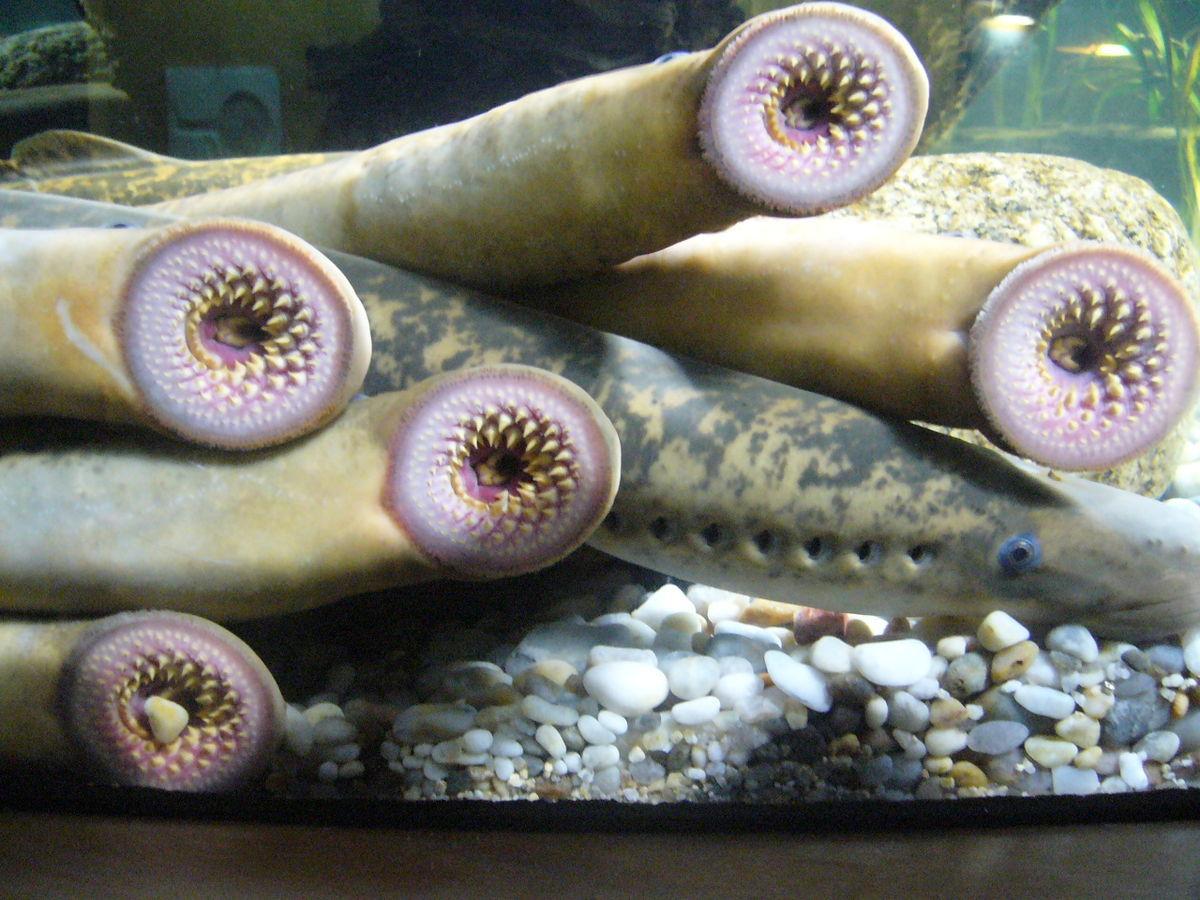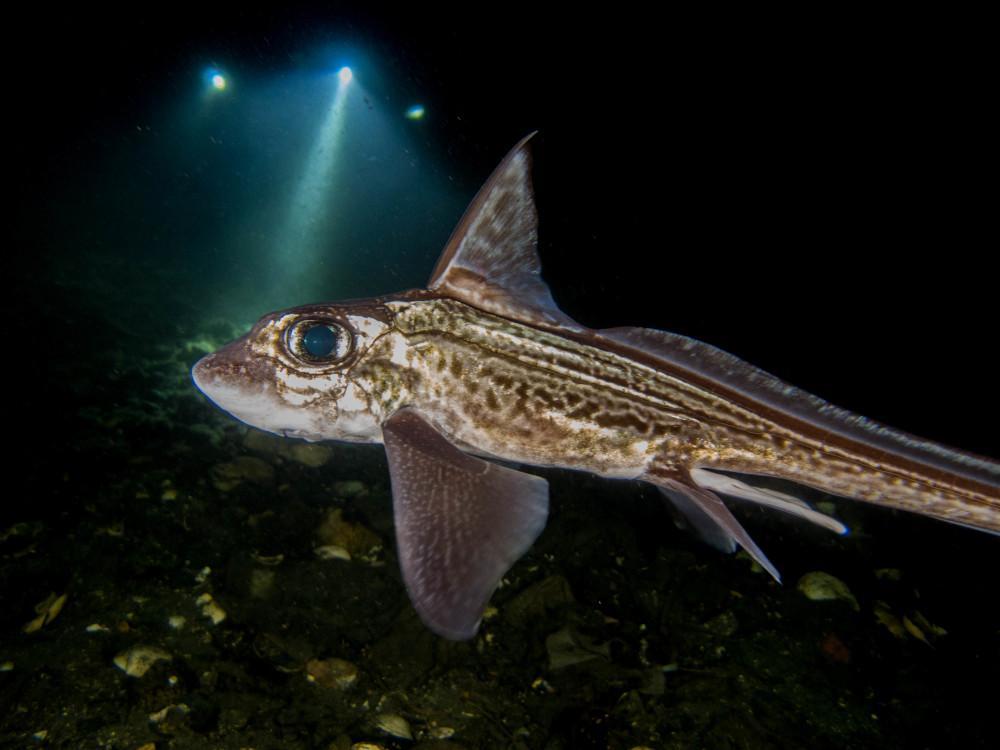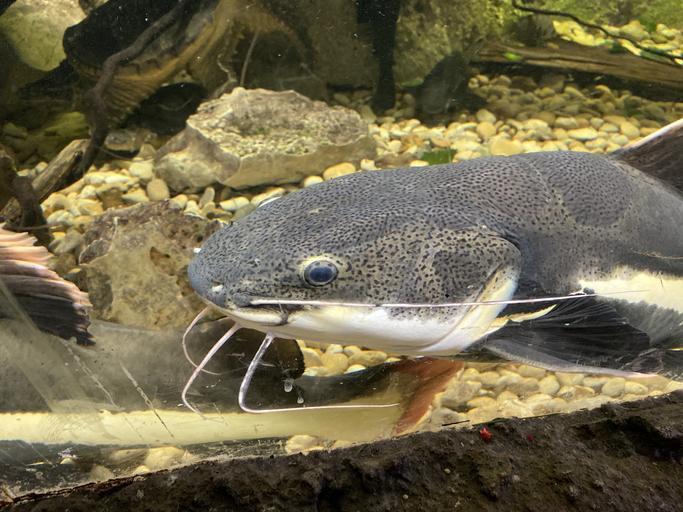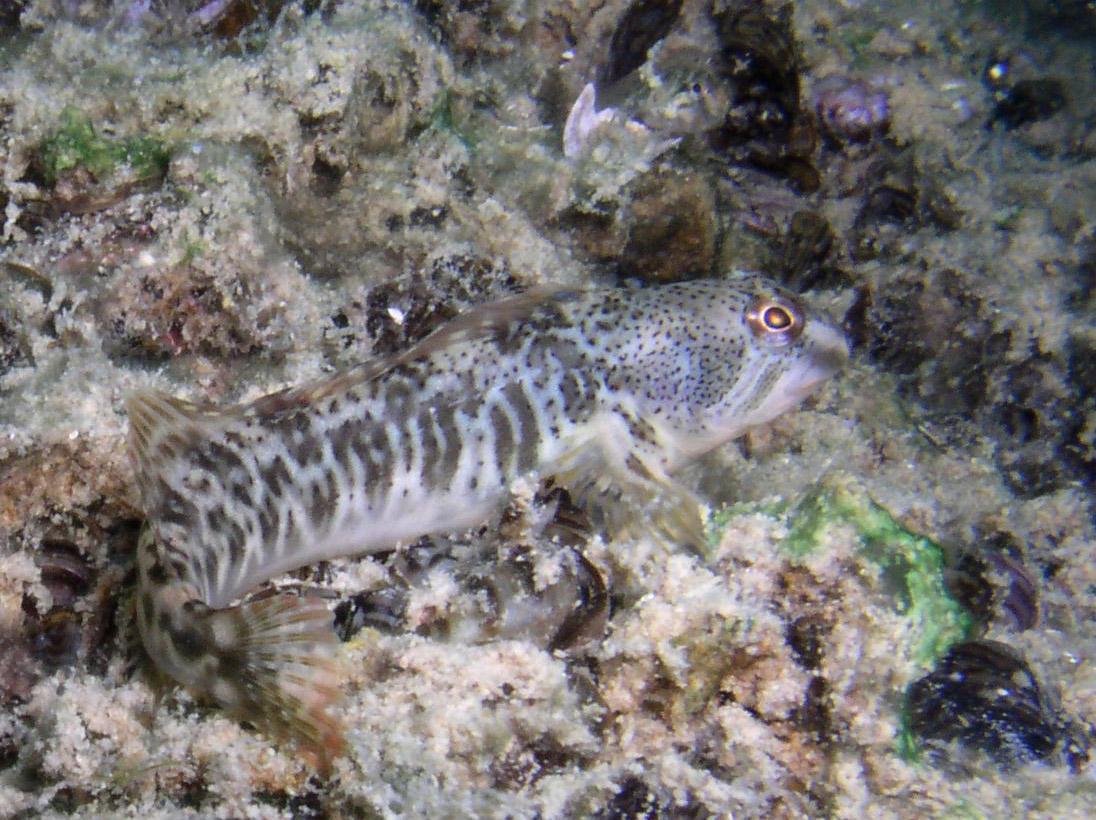Do All Fish Have Scales? - Types of Scaleless Fish


Fish are one of the most diverse types of vertebrate animals on the planet. Inhabiting all kinds of fresh and seawater environments, there are so many types that we need to classify them into different groups. How these are categorized is complicated, but often it is due to certain types of fish sharing the same characteristics. Generally, all fish species are divided into three main groups known as superclasses. These are Agnatha (jawless fishes), Chondrichthyes (cartilaginous fish) and Osteichthyes (bony fish).
You can see that they are grouped for their skeletal structure, not their skin. You may think this is because all fish have the same type, but do all fish have scales? The truth is that there are some types of scaleless fish, even if they are in the minority. AnimalWised takes a look at different types of fish without scales and provides pictures to let you know what they look like.
- Why are there scaleless fish?
- Types of scaleless fish
- Sea lamprey
- Pacific hagfish
- Rat fish
- Conger eel
- Mediterranean moray
- Black bullhead catfish
- Wels catfish
- Freshwater blenny
- Other fish without scales
- Do sharks have scales?
Why are there scaleless fish?
It is understandable for us to ask do fish have scales? There are many fish which look like they have very smooth skin, not the hard individual scales which we might associate with fish. Not all of these are scaleless fish. There are some which have scales that are so small, we can barely detect the with the human eye. If this is the case, we may wonder why some fish have scales and some don't.
Throughout evolution, animals have developed numerous methods to protect themselves and survive in different environments. Fish evolved scales to fulfill various functions. The most important of these is likely to be protection. The hard scales on a fish's body can help protect them against predators, parasites and even physical trauma if they swim too close to a hard surface.
However, this doesn't mean that fish without scales do not have protection. Many of them have been endowed with other characteristics which allow them to survive in often very harsh environments. These may not be so obvious. Some have developed thicker skin, others have evolved sensory organs which allow them to better evade predators.
Types of scaleless fish
There are numerous types of fish without scales that present different morphologies and vary in behavior. However, we are able to classify these species into different groups to better identify them. In this way, we classify them into the following groups:
- Petromyzontiformes: this group includes specimens such as the brook lamprey or the marine lamprey, leading them to be referred to as lampreys. They are a type of agnate fish because they lack jaws.
- Chimaeriformes: these are represented by the well-known ‘rat fish’ due to their peculiar appearance.
- Anguilliformes: this group is made up of fish such as eel, conger eel and moray eel, but only the latter two lack scales.
- Siluriformes: also known simply as catfish, within this group we find specimens such as the blue catfish or the thirny catfish, very characteristic for its 4 pairs of ‘whiskers’ on their jaws.
- Myxiniformes: this is the case of the species of hagfish, agnate fish which are some of the strangest in marine environment. They are technically vertebrates, but they don't actually have a spine, but a long piece of cartilage instead.
Now that we know the different groups, we can loot at some of the specific examples of scaleless fish below. It is true that the number of fish without scales is less than those with these structures. The fish that make up this smaller group can be distinguished from each other by their different morphology, distribution and way of life. There are some similarities which we will explain als.
Sea lamprey
Due to their long, almost snake-like body, it is tempting to think of sea lampreys as finless. However, they do have small fins at the back which allows them to propel through the water. Their scientific name is Petromyzon marinus and they belong to the order Petromyzontiformes. This animal can live for more than 15 years and can measure up to 1 meter in length.
They are agnate because they lack jaws, instead using a suction-cup shaped mouth with rows of concentric teeth to latch on to other marine life. Their habitat is the Atlantic Ocean and Mediterranean Sea, but they travel up rivers to carry out reproduction (making them anadromous). While we may think of parasites as being small insect-like creatures, the sea lamprey is also a parasite.
They are hematophagous since they feed off the blood of other animals. They adhere to the skin of their prey and use their teeth to create a wound. From this, they suck the blood and sustain themselves. Although the host can live for a long time with a lamprey attached, the wounds they create can also be fatal.
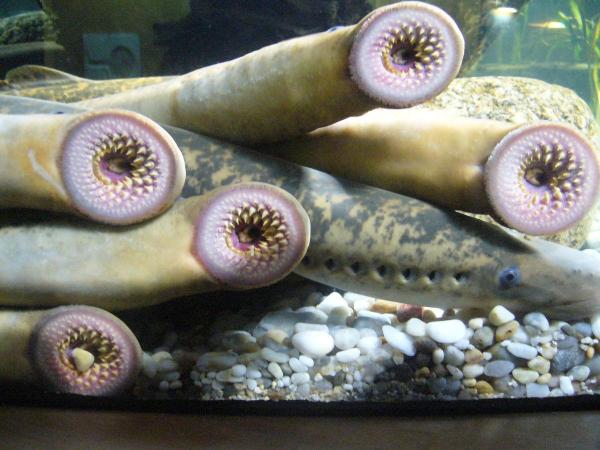
Pacific hagfish
Their scientific name is Eptatretus stoutii and they belong to another group of agnates known as Myxini. This fish also has an elongated, eel-like body which have no true fins. Unlike the lamprey, they do not have a suction type mouth, but they do not have jaws either.
Hagfish have highly developed sensory organs which heighten the smell and touch senses. Barbels around their mouth which look like whiskers are used to supplement this sensory acuity. They also have small-tooth shaped structures and a tongue.
Hagfish have scaleless skin which has muscle fibers embedded within it. This skin is unlike other fish in a rather strange way. It is used by humans as a type of leather used in various fashions and garments.
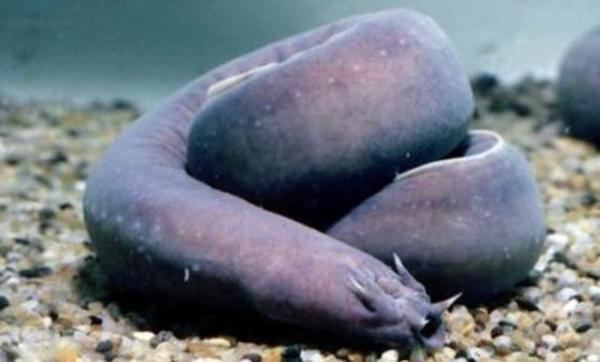
Rat fish
Its scientific name is Chimaera monstrosa and it belongs to the order of the Chimaeriformes. They are also known as a rabbit fish and have a very large head attached to a relatively small body tapering away from it. Their large eyes give them a distinct look which contributes to their nickname.
They have a fold which covers the opening of their gills, an upper jaw fused to the cranium and only two branchial openings. They inhabit only very deep waters of the Atlantic Ocean and Mediterranean Sea, making them relatively difficult to study. They generally eat a diet of algae, small fish crustaceans or echinoderms.
Although rat fish are difficult to study in the wild, you can also check out our article on the rarest marine animals which are even harder to find.
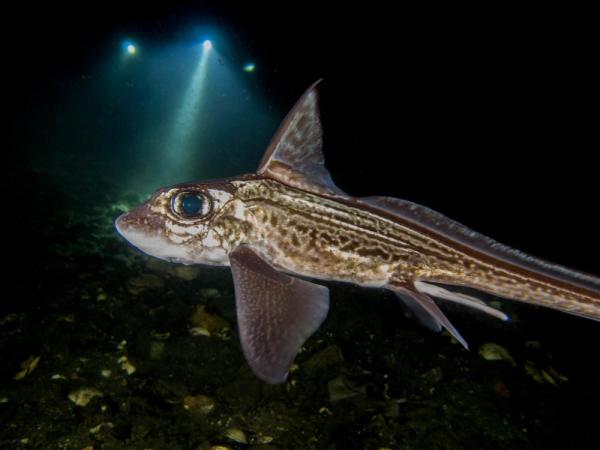
Conger eel
Known scientifically as the Conger conger, the conger eel can reach up to 2 meters in length. Their morpholog is very similar to take of other eels. They have very thick skin which produces a mucins and proteins to form slime which is excreted via glands.
They have a relatively large mouth, large eyes and a grey scaleless skin. They inhabit the seabed and normally feed on other animals which also reside there, such as crustaceans, mollusks and some fish. They are also considered easy prey themselves since they are curious and will move closer to disturbances made by other animals. Their wounds heal very quickly and have a great capacity for regeneration.
Our list of prey animals helps explain some of the characteristic differences between predators and those which are predated upon.
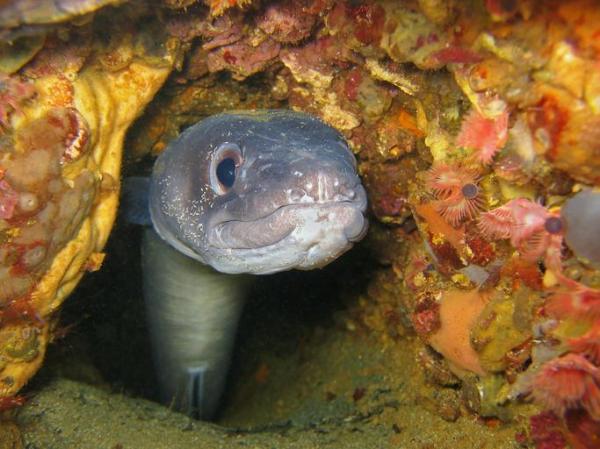
Mediterranean moray
The next scaleless fish on our list is the Mediterranean moray (Muraena helena), another animal belong to the order of eels. They have a long and flattened body which reaches a great length. Their head holds a large mouth with numerous sharp teeth and irregular colorations on their scaleless skin which look a little like stains. They inhabit rocky areas and live in between crevices, emerging to feed on other fish, cephalopods and/or crustaceans.
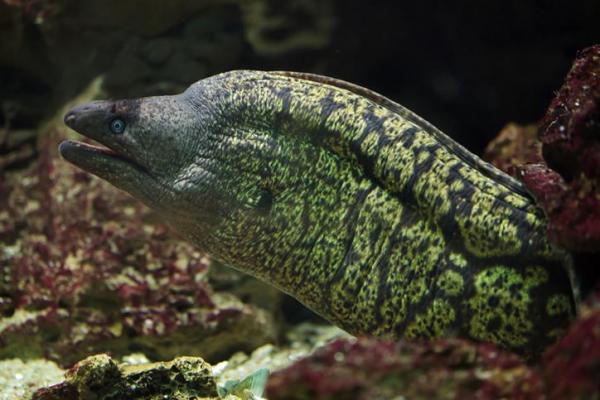
The channel catfish (Ictalurus punctatus) belongs to the order of Siluriformes which is characterized by a ver robust body. Their skin has dark colorations with black spots and no scales. Their large mouth has four barbels, the whisker-like projections which are used as sensory organs. They have two fins on their back which feature a series of spines which are used as part of their defense mechanism.
The channel catfish prefers freshwater habitats such as stretches of river or lakes (or, as their name implies, channels). They feed mainly on small animals such as other fish, mollusks or crustaceans. Channel catfish are adapted to low light conditions and communicate using sound and even using different chemicals in their environment.
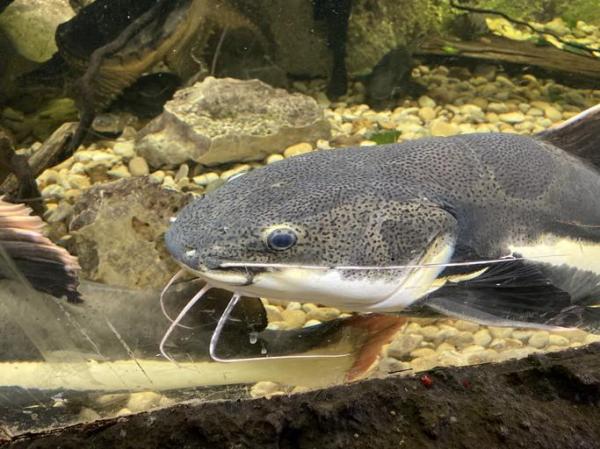
Black bullhead catfish
The black bullhead catfish (Ameiurus melas) also belongs to the order of the Siluriformes. It is mainly characterized by having a body covered in a large layer of mucus-like substance and is quite dark in color. As with all other types of catfish, they have barbels on their mouth. They are also another type of freshwater scaleless fish, inhabiting rivers where it mainly feeds on other fish, making them piscivorous feeders.
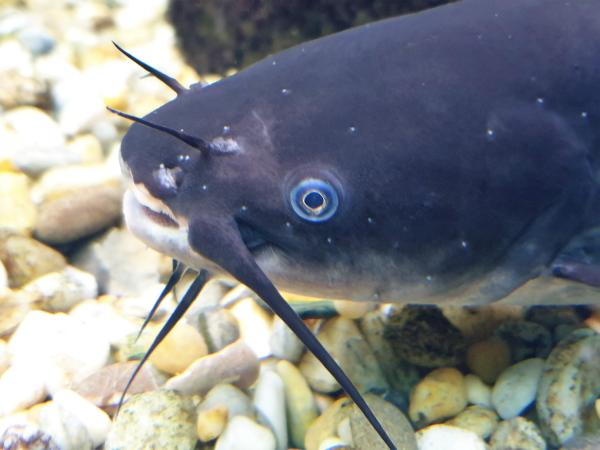
Wels catfish
Another scaleless catfish, the wels catfish (Silurus glanis) also belongs to the order of Siluriformes. This fish has a large size and is characterized by having an elongated body, with a large cephalic region and a mouth surrounded by three pairs of barbels.
They are a very acute freshwater predator, living in rivers, reservoirs and other freshwater spaces. They rely on hearing, but their sight is also bolstered by a tepetum lucidum. This is a reflective part of the eye which helps them to see their prey in low lights. Cats, dogs and other animals also have this feature, allowing light to be reflected and enhanced to see better.
These animals are such good predators, they can invade certain ecosystems and cause problems by eating too many of its inhabitants. There is even data to suggest the wels catfish has attacked humans. Since they are relatively large, they could potentially cause some harm. However, they wouldn't be considered one of the largest fish in the sea.
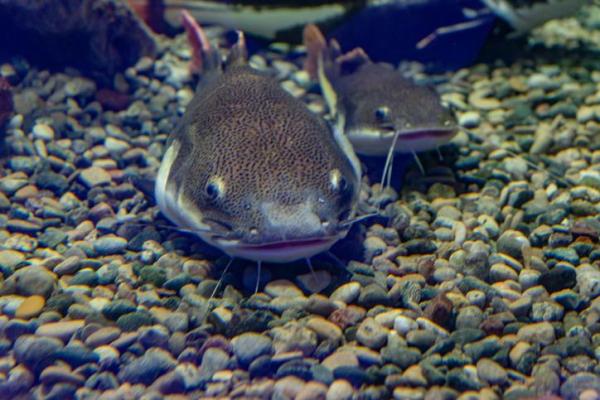
Freshwater blenny
The freshwater blenny (Salaria fluviatilis) is another type of fish without scales, this time belonging to the order of Perciformes. This small fish without scales of variable colorations is known to display dark bands along its body, a mouth with developed combed teeth and a tentacle at the top of their eyes.
Male blennies develop during mating season a kind of ridge on the head that characterizes them. They are animals of freshwater habitats, predominating in rivers where they can feed on some crustaceans, insects and other smaller fish.

Other fish without scales
In addition to the aforementioned fish without scales, there are some more species in the world, highlighting that the vast majority of them belong to the order of Siluriformes. These include many catfish species. Other examples of fish without scales include:
- Redtail catfish (Phractocephalus hemioliopterus)
- Zebra catfish (Brachyplatystoma juruense)
- Tiger sorubim (Pseudoplatystoma tigrinum)
- Atlantic hagfish (Myxine glutinosa)
- Common sturgeon (Acipenser sturio)
- Swordfish (Xiphias gladius)
Do sharks have scales?
When we ask whether all fish have scales, some people may forget the shark. Some may not even realize the shark is a type of fish. Although sharks make up a very large group of fish species, they all share certain characteristics.
We may think sharks do not have scales because their skin looks so smooth and we cannot easily distinguish its texture. However, sharks do have scales. They are simply very small. However, their scales are much different to other fish species. They have what is known as dermal denticles, scales which look like small teeth when observed under a microscope.
This skin is very tough and helps to protect them from various attacks, even if they are one of the deadliest predators in the ocean. However, they also protect them against parasites and other potential threats to their health. Read our article on how sharks reproduce to know more about these fantastic creatures. You can also take a look at our article on the rarest marine animals in the world to find out some more fun fish facts:

If you want to read similar articles to Do All Fish Have Scales? - Types of Scaleless Fish, we recommend you visit our Facts about the animal kingdom category.
- Doadrio, I. (2002). Atlas and red book of the continental fish of Spain. https://www.miteco.gob.es/es/biodiversidad/temas/inventarios-nacionales/inventario-especies-terrestres/inventario-nacional-de-biodiversidad/ieet_peces_atlas.aspx
- Central University of the Eastern Region – Universidad de la República, Uruguay. (2012). Animal Biology Course Pilot's License. https://eva.udelar.edu.uy/pluginfile.php/122952/course/section/14532/Cartilla_Peces.pdf







